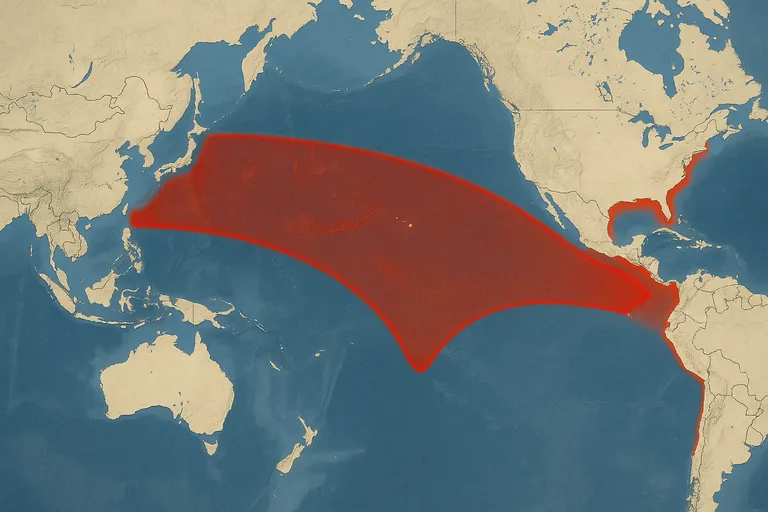Evacuations reach Guam, Hawaii, and Japan as one of the strongest earthquakes in years sparks global concern.
Just before noon on Tuesday, phones across the Pacific lit up with emergency alerts. A massive 8.8-magnitude earthquake had struck a remote area along Russia’s far eastern coast, triggering widespread tsunami warnings and evacuations across the region—from Guam to Hawaii.
“I went to higher ground just in case,” said Sam Mabini, a former Guam senator. She and her family moved quickly from the low-lying Tamuning area to Agana Heights, a safer, more elevated part of Hagåtña, Guam’s capital.
📱 Mass Alerts and Swift Evacuations
The quake’s intensity set off international tsunami warning systems, prompting swift action in multiple territories and nations:
- Guam & Saipan: Government alerts urged residents to evacuate coastal zones. Schools and businesses closed, and workers were sent home.
- Russia: Waves up to 4 meters (13 feet) were recorded in the region near the epicenter. Authorities ordered immediate shoreline evacuation.
- Japan (Hokkaido): Public broadcaster NHK showed scenes of residents sheltering on rooftops under tents, while fishing boats fled harbors.
- Hawaii: Although less immediately threatened, tsunami readiness protocols were put on alert as a precaution.
📍 Where Was the Quake?
The earthquake struck near Russia’s Kamchatka Peninsula, one of the world’s most seismically active zones. The depth and remote location prevented larger waves from impacting major cities, but the potential for aftershocks and localized tsunamis remains high.
This was one of the strongest quakes recorded in the last decade—raising global attention on coastal preparedness in the Pacific Ring of Fire.
🌪️ A Reminder of the Risks
Natural disasters like this highlight ongoing vulnerability in island and coastal communities, especially in the Pacific:
- Guam and nearby islands sit atop major tectonic zones
- Tsunami readiness depends heavily on fast alerts and trusted community plans
- Climate change could amplify the impact of future seismic or oceanic events
🧭 What Happens Next?
Authorities across the region are:
- Monitoring for aftershocks and wave patterns
- Reviewing evacuation response times
- Reassuring citizens with updates via emergency broadcast systems
So far, no major injuries or damages have been reported in Hawaii or Guam—but the situation remains under observation.
🙏 Final Thought
This quake didn’t cause catastrophe—but it delivered a clear message:
Preparedness saves lives.
With stronger alert systems and fast community response, islands like Guam and regions like Hokkaido show the power of readiness in the face of nature’s extremes.
By ✍️ Yorlinda Ramìrez- MicuPost Team
Sources:



